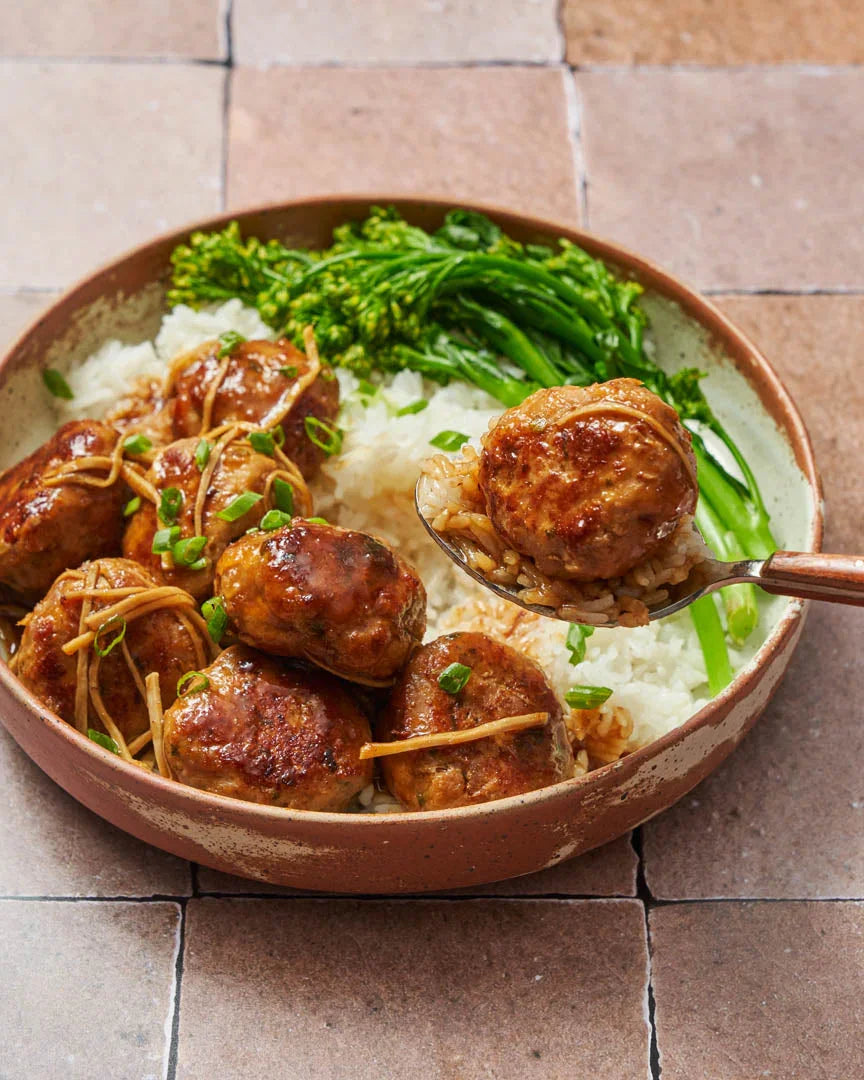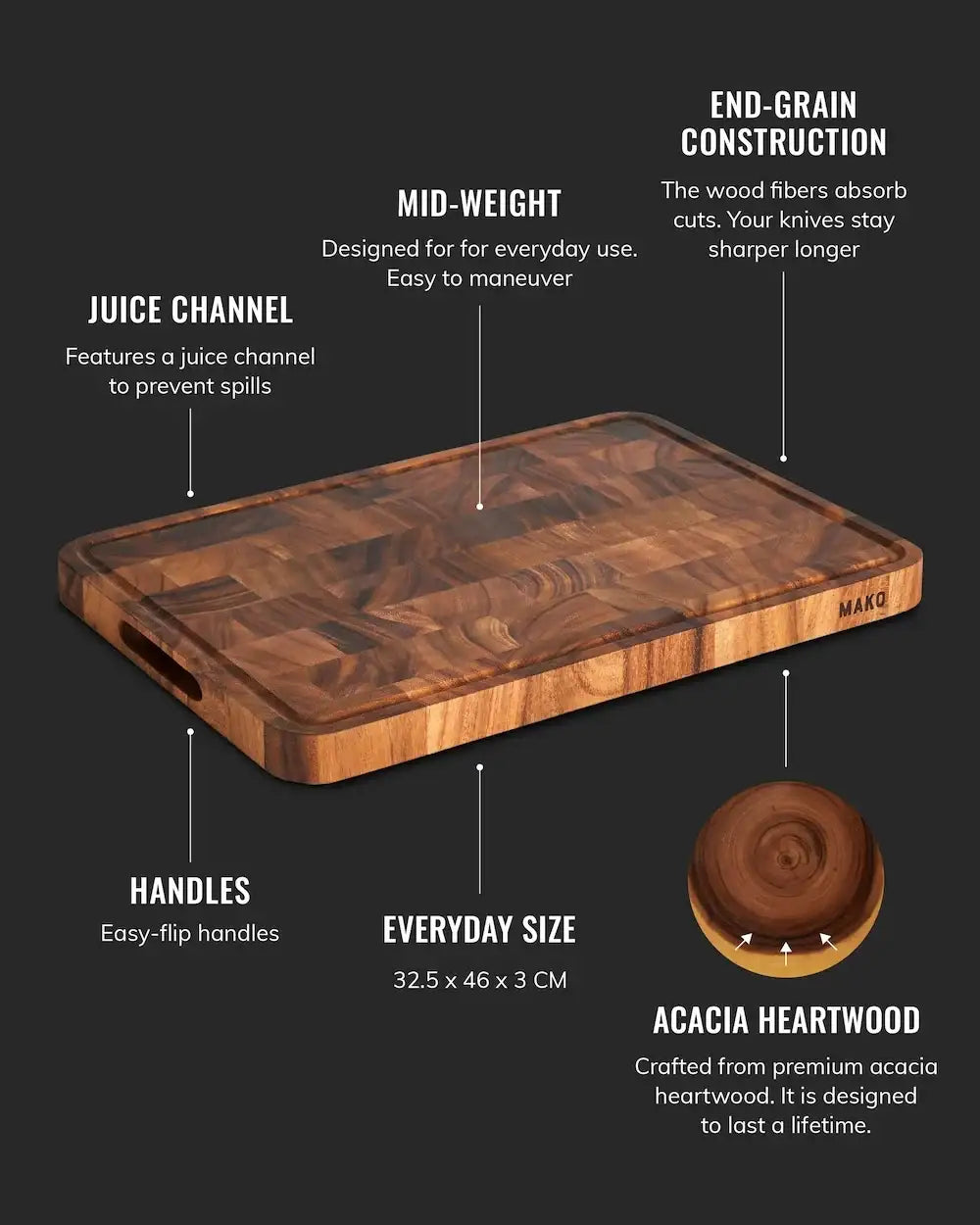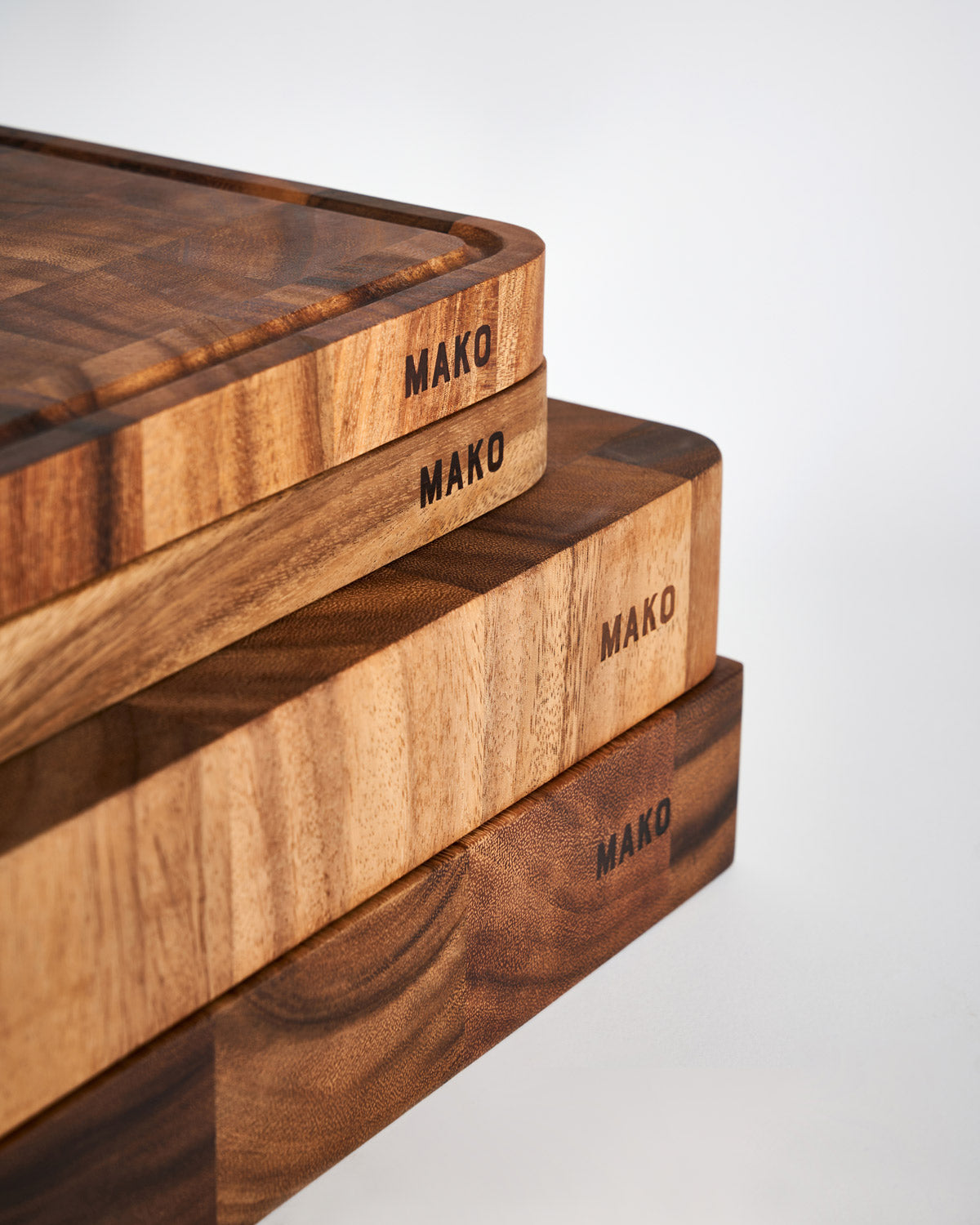
How long should a wooden chopping board last?
Maintaining a wooden chopping board is easier than you’d think. If you take care of your board, it will reward you with a long and beautiful life. It really is simple; hand-wash and dry your board after each use, avoid using meat mallets and cleavers, use salt and lemon on odorous or stained areas, and give your board a light oil from time to time.

But how long will that life be?
That depends on the quality, construction, and maintenance. When a board needs replacing, it’s either warped, heavily scratched, or has smells you just can’t get rid of - a worn board can even harbour bacteria. On average, a quality wooden board should last you between 5 and 10 years, if it is well maintained. But a premium-quality board like the MAKO Master 20 Butchers Block, made from acacia heartwood, will last you a lifetime with the right use and care.
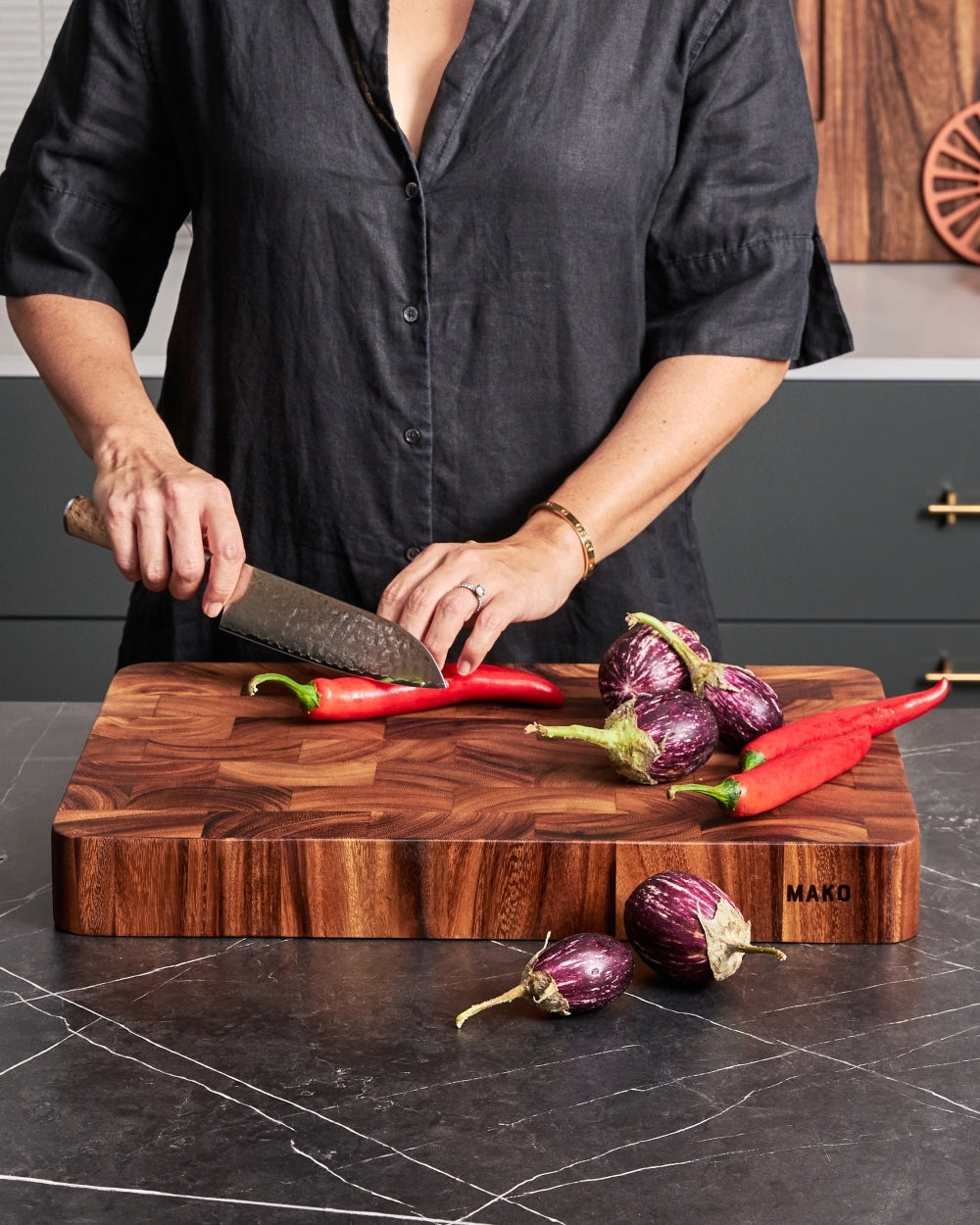
What is acacia heartwood?
How long a chopping board lasts comes down to care and materials. The premium acacia wood used in our MAKO chopping boards, uses one of the hardest woods available, harder than maple or even oak. Rich in natural oils, it's water-resistant and is less prone to scratches. Oh, and it will protect your knife blades with every use. It is also naturally anti-bacterial and self-healing. This material is used in our wooden chopping boards because it offers longevity and style. Available in edge-grain and end-grain, our wooden chopping boards are low maintenance, making food prep and clean up so much easier.
End grain boards
End grain boards are made by glueing smaller pieces of wood together, so the wood fibres stand on their end, making a cutting surface that highlights the growth rings. This requires an additional glueing process that doubles the manufacturing time. Thick and heavy, they’re loved by professional chefs, for the way the knife blades sink into the fibres and don’t cut against them. They are more durable and forgiving on knife edges.

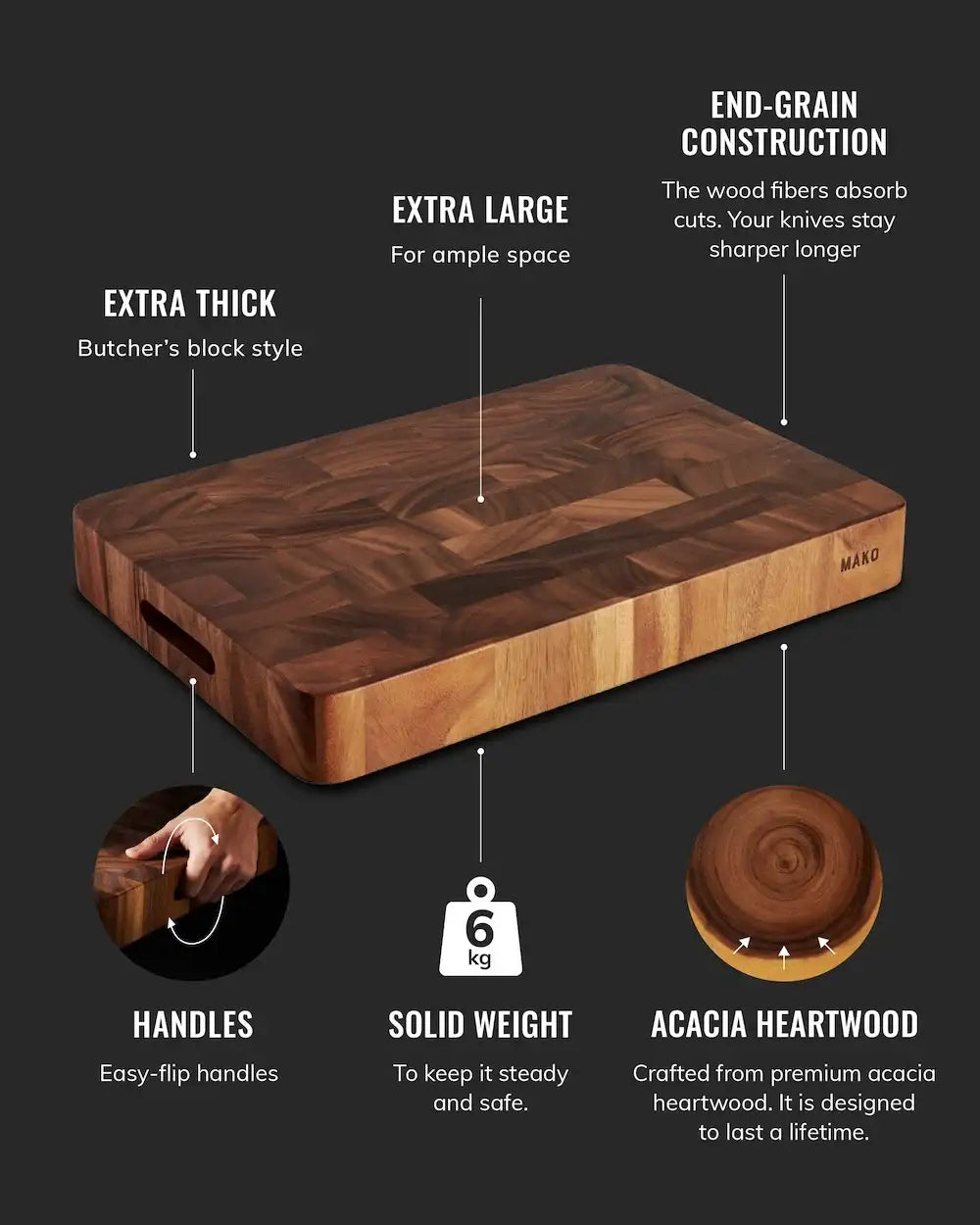
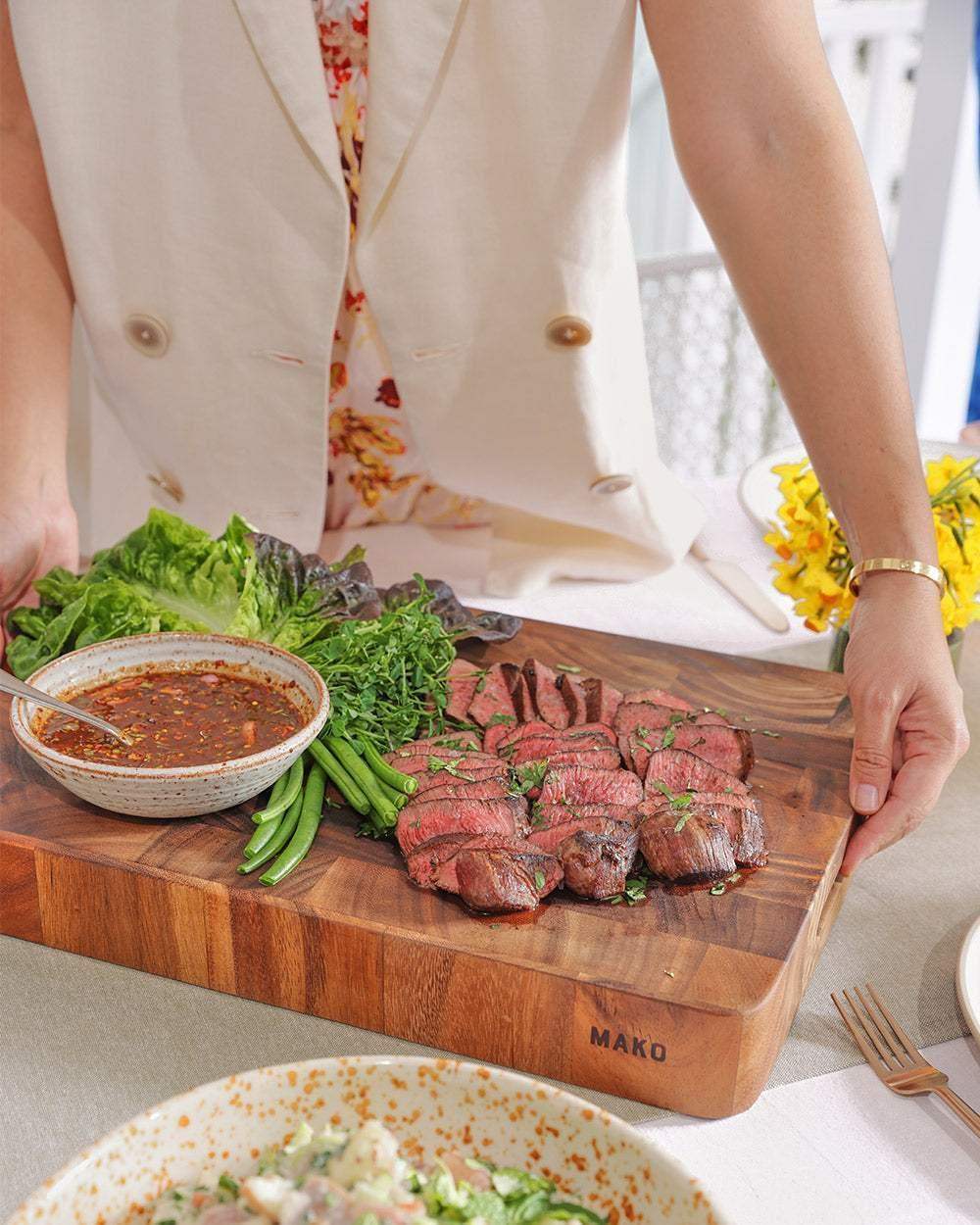
















Edge grain boards
Edge grain boards are made of wood planks joined together along the cutting surface, showing wood fibres running lengthwise. This is also a long-lasting construction but only if made using dense hardwoods. Many edge-grain boards suffer from cheaper materials, making lightweight boards that can warp or crack. Because the wood fibres run along the surface, knives cut across the fibres which can blunt them faster. The type of wood used really matters here, and the thicker and more solid the board, the better.
















Featured products
Blog posts

Gochujang Honey Glazed Ham

Salmon Sushi Bowl
